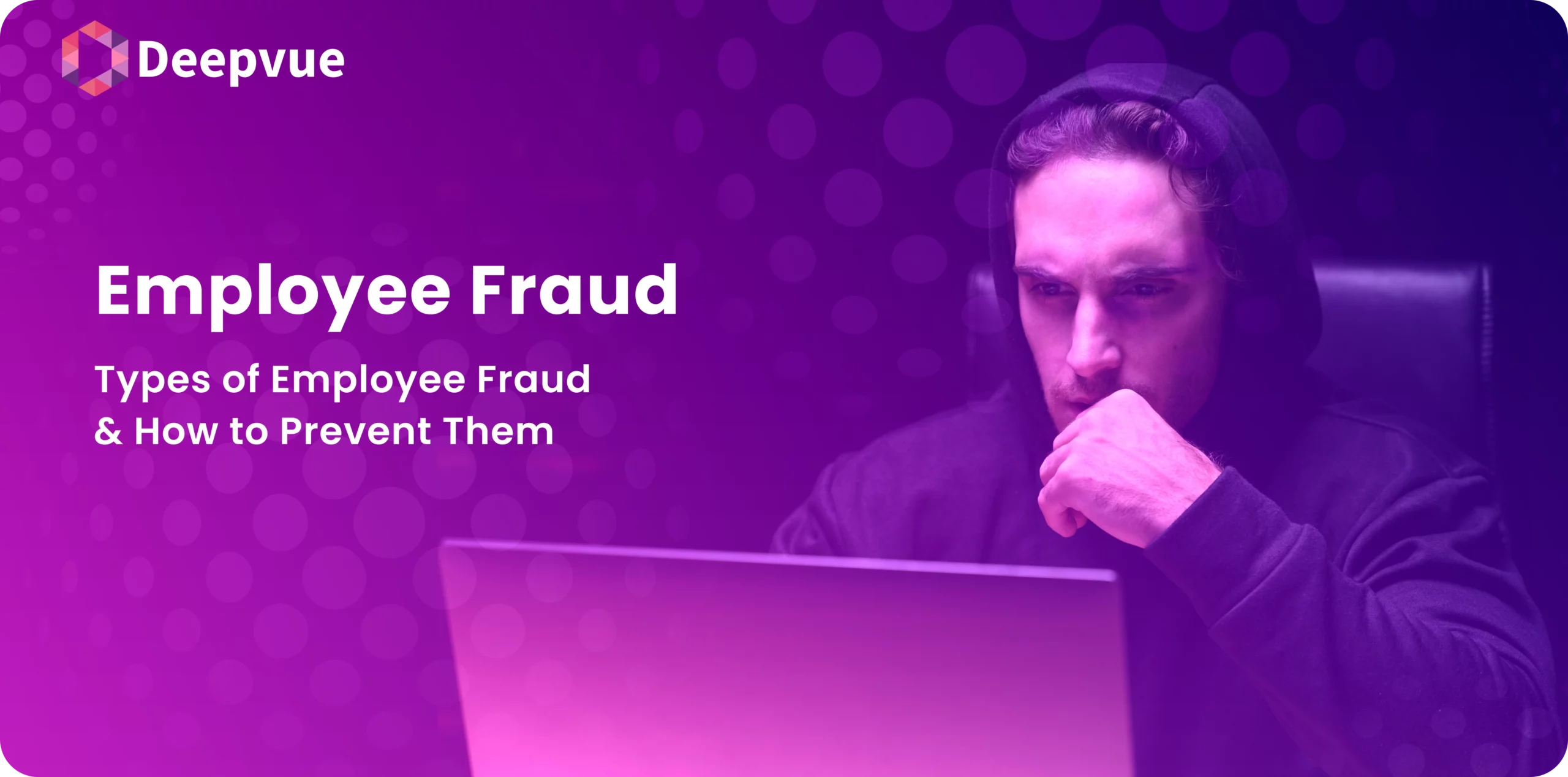Employee fraud is a significant threat to businesses across various industries. When trusted employees deceive their employers for personal gain, it can lead to financial losses, damaged reputations, and legal challenges. This blog explains various types of employee fraud, how to detect them, and strategies to prevent them.
What is Employee Fraud?
Employee fraud occurs when an employee intentionally deceives their employer for financial or personal gain. It often involves manipulation or misappropriation of company resources. Recognizing and understanding employee fraud is crucial in protecting your business from significant financial and reputational damage.
Common Types of Employee Fraud
1. Embezzlement
Embezzlement is the misappropriation of company funds or property by someone in a trusted position.
Examples:
- Redirecting payments from customers to personal accounts.
- Skimming cash from sales or deposits.
Red Flags:
- Discrepancies in financial records.
- Employees living beyond their means.
Prevention:
- Segregate financial duties.
- Conduct regular audits and reconciliations.
2. Expense Reimbursement Fraud
This occurs when employees claim false expenses to get reimbursed more than they are entitled to.
Examples:
- Submitting fake or inflated receipts.
- Claiming personal expenses as business-related.
Detection:
- Scrutinize expense reports and receipts.
- Compare expenses against company policies.
Prevention:
- Establish clear expense policies.
- Use automated expense management systems.
3. Payroll Fraud
Payroll fraud involves manipulating the payroll system for financial gain.
Examples:
- Creating ghost employees to collect extra paychecks.
- Inflating hours worked.
Internal Controls:
- Regular payroll audits.
- Separate payroll duties among different employees.
4. Data Theft
Data theft involves unauthorized access to confidential information, often for financial gain.
Instances:
- Stealing customer information.
- Selling proprietary information to competitors.
Protection Measures:
- Implement robust cybersecurity protocols.
- Monitor data access and unusual activity.
5. Kickbacks and Bribery
This form of fraud involves employees receiving incentives from third parties in exchange for favorable treatment.
Notable Cases:
- Accepting money from vendors in return for contracts.
- Receiving gifts or services from clients for preferential treatment.
Prevention Strategies:
- Enforce a strict code of ethics.
- Conduct thorough vetting of vendors and partners.
6. Forgery
Forgery involves creating false documents or signatures to deceive others.
Examples:
- Faking approval signatures.
- Altering financial documents.
Preventive Measures:
- Use digital signatures and document verification.
- Implement stringent document control procedures.
Detecting Employee Fraud
Early detection of fraud is critical to minimize damage. Here are key strategies:
- Importance of Early Detection
Detecting fraud early can limit financial losses and discourage future attempts. Regularly review financial records for irregularities.
- Implementing Internal Controls
- Segregation of Duties: Ensure no single employee has control over all aspects of any significant financial transaction.
- Regular Reconciliations: Frequently reconcile financial records to identify discrepancies.
- Role of Audits and Forensic Accounting
Regular audits and forensic accounting can uncover fraudulent activities that internal controls might miss.
- External Auditors: Engage independent auditors for unbiased reviews of your financials.
- Internal Audits: Regular internal audits help in monitoring compliance with company policies.
- Creating a Culture of Accountability
A culture of accountability discourages fraudulent behavior.
- Whistleblower Policies: Implement policies that protect employees who report suspicious activities.
- Transparency: Ensure that financial operations are transparent to foster trust among employees.
Preventing Employee Fraud
Proactive measures are essential to prevent employee fraud:
Rigorous Hiring Practices
- Background Checks: Conduct thorough background checks on all potential hires, especially those in sensitive financial positions.
- Reference Checks: Verify previous employment and ask about any suspicious activities.
Internal Controls
- Implement Segregation of Duties: Ensure no single employee has control over all financial functions.
- Regular Financial Reconciliations: Frequently reconcile financial records to catch discrepancies early.
- Access Controls and Permissions: Limit access to financial information and systems to authorized personnel only.
Employee Training and Awareness
- Fraud Awareness Programs: Educate employees about the signs of fraud and the importance of reporting suspicious activities.
- Encouraging Whistleblowing: Promote a culture where employees feel safe reporting unethical behavior.
Technology and Software
- Fraud Detection Software: Use technology to monitor and detect suspicious activities in real-time.
- Cybersecurity Measures: Implement strong cybersecurity protocols to protect sensitive information.
Ethical Company Culture
Foster a culture of integrity and accountability.
- Leadership Example: Leaders should model ethical behavior and communicate its importance.
- Employee Involvement: Involve employees in ethics programs and decision-making processes to foster a sense of ownership.
Responding to Employee Fraud
Immediate Actions upon Detection
- Isolate the Situation: Limit the suspected employee’s access to prevent further damage.
- Document the Evidence: Collect and secure all relevant evidence of fraudulent activities.
- Consult Legal Counsel: Seek legal advice to ensure proper handling of the situation.
Legal Implications and Involvement of Law Enforcement
- Filing a Police Report: Report the fraud to the authorities if it involves criminal activities.
- Cooperate with Investigations: Work with law enforcement and legal teams to investigate the fraud thoroughly.
Internal Investigations and Due Process
- Internal Investigation Team: Form a team to conduct a thorough internal investigation.
- Interviewing Involved Parties: Conduct interviews with all involved parties while maintaining confidentiality.
- Reviewing Financial Records: Analyze financial records to understand the extent of the fraud.
Mitigating Damage and Recovering Losses
- Recovery of Stolen Assets: Work with legal and financial experts to recover stolen assets.
- Strengthening Internal Controls: Address weaknesses in internal controls to prevent future incidents.
- Communicating with Stakeholders: Keep stakeholders informed about the situation and the measures taken to address it.
Conclusion
Employee fraud can significantly impact your business, but by understanding its forms, implementing robust preventive measures, and fostering a culture of integrity, you can protect your organization. Stay vigilant, continuously improve your internal controls, and educate your employees to create a secure and trustworthy workplace.
Remember, preventing and detecting fraud is an ongoing process. Regularly review and update your policies and procedures to stay ahead of potential threats.
To learn more about how Deepvue’s customer insights can enhance your online verification process, visit Deepvue.tech and explore their range of solutions designed to ensure accuracy and efficiency.
FAQs
What are the most common signs of employee fraud?
Common signs of employee fraud include unexplained financial discrepancies, resistance to audits, significant lifestyle changes not supported by salary, frequent complaints about financial processes, and unusual behavior regarding financial transactions or company resources.
How can small businesses protect themselves from employee fraud?
Small businesses can protect themselves by implementing strong internal controls, conducting thorough background checks during hiring, regularly auditing financial records, segregating financial duties, and fostering an ethical workplace culture that encourages transparency and accountability.
What should I do if I suspect an employee of fraud?
If you suspect an employee of fraud, isolate the situation to prevent further damage, gather and document evidence, consult legal counsel, and conduct a thorough internal investigation. It’s crucial to handle the situation discreetly to avoid alerting the suspect prematurely.
How often should internal audits be conducted to detect fraud?
The frequency of internal audits can vary depending on the size and nature of the business, but it is generally recommended to conduct them at least annually. For high-risk profiles or larger organizations, more frequent audits, such as quarterly or semi-annual reviews, may be necessary.
What role does technology play in preventing employee fraud?
Technology plays a crucial role in preventing employee fraud by providing tools for monitoring financial transactions, detecting unusual patterns, and securing sensitive data. Fraud detection software, access controls, and automated expense management systems are examples of technological solutions that can help mitigate the risk of fraud.








